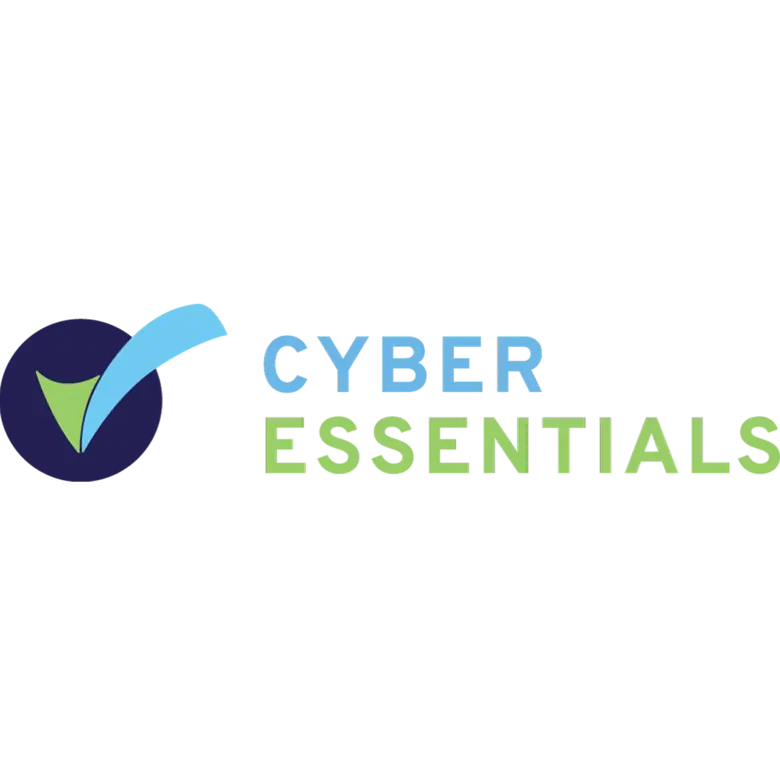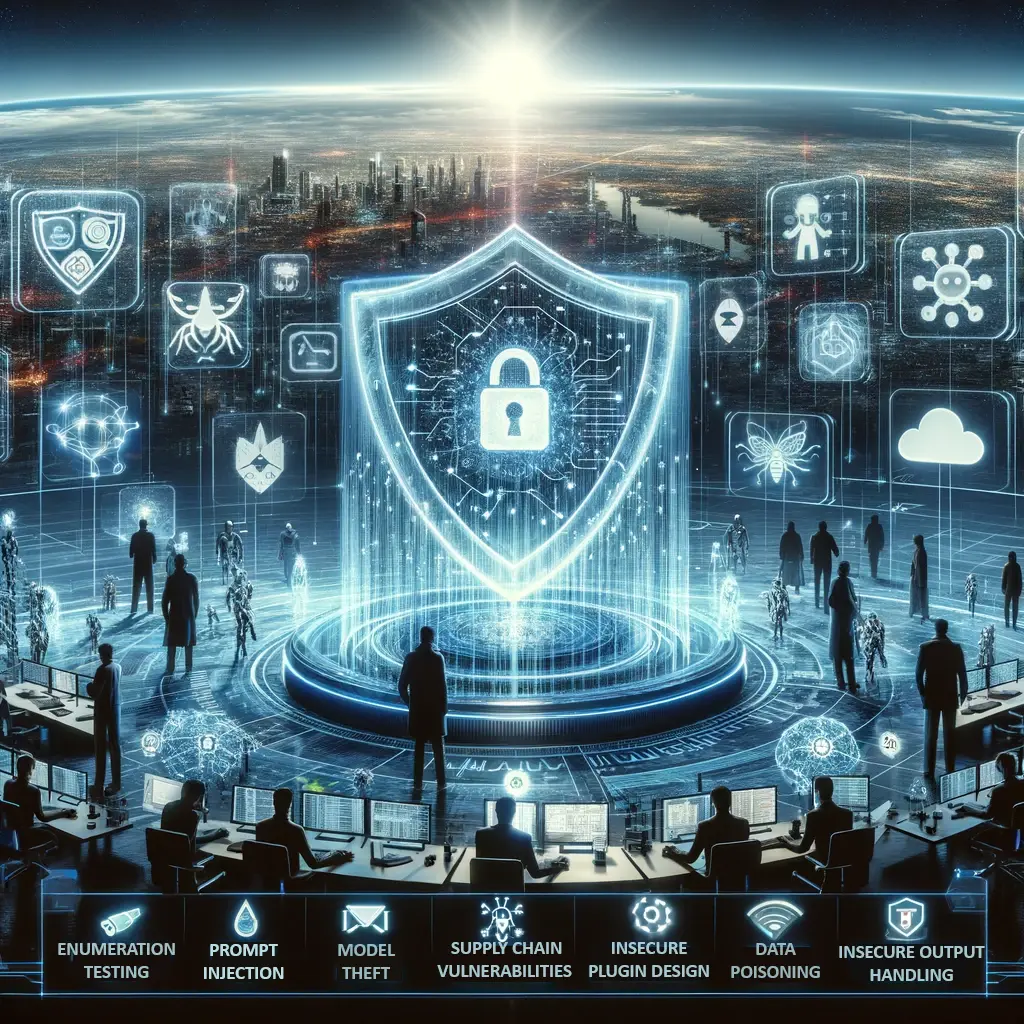In today's world, where the internet is a crucial part of our daily lives, the safety of our online information and activities has never been more important. For businesses big and small, this means making sure that their digital doors are locked tight against hackers and cyber threats that are becoming smarter by the day. Enter the UK's Cyber Essentials Scheme, a government-supported program that acts like a cyber-security health check for businesses, ensuring they have the necessary protections in place. This blog takes you through what the Cyber Essentials Scheme is all about, highlighting its key benefits and how it can help businesses stay safe online, all explained in a way that's easy to understand, even if you're not a tech expert.
A Step Forward in Protecting Your Business Online
Think of the Cyber Essentials Scheme as your business's shield against cyber villains. It's not just another piece of paperwork; it's a proactive step towards making sure your business can stand strong against online threats. Whether you're running a startup or a small to medium-sized enterprise, this scheme is designed to equip you with the basics of cyber defense, helping you keep your digital space safe and sound. Through a simple check-up and certification process, it shows that your business is serious about cybersecurity, giving you and your customers peace of mind in this digital age.
Defining the Scope of Cyber Essentials
The Importance of Defining the Scope of Cyber Essentials
Understanding the scope of your IT infrastructure is a pivotal first step in this journey, encompassing everything from devices and networks to cloud services and personal gadgets used for work (BYOD policies). It's about gaining a comprehensive view of your digital assets, setting the stage for effective protection across the board.
Why is this so important?
Understanding the scope is akin to mapping the terrain before setting out on a journey. It ensures that no part of your digital landscape is left unprotected, covering everything from the email server that powers your communication to the mobile devices that access your corporate network remotely. This meticulous approach sets the stage for effective protection across every touchpoint of your business operations.
Asset Management: The Backbone of Cyber Essentials
Underpinning the need to define your scope is the principle of asset management. As highlighted in the Cyber Essentials documentation, asset management isn't just an administrative task; it's a core function that supports all five Cyber Essentials controls (Firewalls, Secure Configuration, User Access Control, Malware Protection, and Security Update Management). Effective asset management is about knowing what you have, where it is, and how it's protected. It enables you to apply the right level of security to the right assets, ensuring that your defenses are as efficient and effective as possible.
Consider asset management as the foundation of your cyber-security strategy. It's what allows you to prioritize your resources and efforts, focusing on protecting the most critical and vulnerable parts of your IT infrastructure. By clearly defining the scope and embracing thorough asset management, you significantly enhance your organization's cyber-security posture. This not only helps you meet the Cyber Essentials criteria but also builds a robust defense system that can adapt to the evolving cyber threat landscape.
The Five Key Cyber Essentials Security Controls
At the heart of Cyber Essentials lie five key controls: Firewalls, Secure Configuration, Access Control, Malware Protection, and Patch Management. These controls are the linchpins of a robust cybersecurity posture, tailored to shield your business from a spectrum of cyber threats. Moreover, the scheme nods towards modern cyber-security frameworks, including the principle of least privilege and the burgeoning concept of zero trust architecture, ensuring your defenses are not just current but also forward-looking.
1. Firewalls : Your Digital Gatekeepers
Imagine firewalls as the vigilant gatekeepers of your digital kingdom. They scrutinise every bit of data entering or leaving your network, deciding what passes through based on a set of rules you define. This isn't just about keeping the bad guys out; it's also about ensuring that legitimate traffic flows smoothly, facilitating secure and efficient business operations.

Implementation Tips:
- Define Clear Firewall Policies: Think of this as setting ground rules for what's allowed in and out of your network. These rules are tailored to your business's unique needs, ensuring that only safe, necessary traffic gets through.
- Regularly Update Firewall Rules: As your business evolves, so too will your network traffic patterns. Regularly review and update your firewall rules to ensure they remain relevant and effective in securing your network.
- Segment Your Network: Use firewalls to segment your network into zones of trust. By dividing your network into separate zones, you can limit the spread of any unwanted guests (like malware) and minimise the impact of potential breaches, much like having watertight compartments in a ship.
- Monitor Firewall Logs: Keeping an eye on the logs can help you spot suspicious activities early on, allowing you to act swiftly and prevent potential threats from escalating.
2. Secure Configuration : Fortifying Your Foundations
Secure configuration involves tweaking the default settings of your devices and software to strengthen your defenses. Many systems come with 'out-of-the-box' settings focused more on ease of use than security, leaving potential vulnerabilities exposed. Adjusting these settings is like reinforcing the locks on your doors and windows.

Implementation Tips:
- Disable Unnecessary Services and Features: It's like decluttering your digital space; if you're not using certain features or services, turn them off to reduce the number of ways intruders can gain access.
- Change Default Credentials: Many devices come with default usernames and passwords that attackers easily guess. Changing these to something only you know is like changing the locks before you move into a new house.
- Implement Principle of Least Privilege: This means giving people and programs only the access they need to do their job, nothing more. It's akin to giving a house key only to those who really need it, rather than leaving it under the doormat..
- Regularly Review Configurations: Just as you might regularly check your home's security measures, it's important to review and update your digital configurations to ensure they remain secure against new threats..
3. User Access Control : Managing the Keys to Your Digital Kingdom
User Access Control is akin to deciding who gets keys to your building and what doors they can open once inside. It's about ensuring that each person (or program) has access only to the resources they need to do their job, nothing more. This minimizes the risk of sensitive information falling into the wrong hands, whether through malicious intent or accidental mishaps..
Implementation Tips:
- Audit User Accounts Regularly: This is like periodically checking who has keys to your building and making sure they still need them. Remove access for those who've left the team or no longer need it.
- Enforce Strong Authentication Practices: Strong passwords are a must, but adding another verification step, like a code sent to a phone (Multi-Factor Authentication, MFA), is like adding a deadbolt to your doors..
- Educate Users: Regular training sessions on the importance of cyber-security practices can be likened to fire drills; they ensure everyone knows how to prevent fires and what to do if one starts.
4. Malware Protection : Your Digital Immune System
Malware protection shields your systems from malicious software that can steal, corrupt, or hijack your data. Think of it as your business's immune system, designed to detect, block, and remove digital pathogens before they can cause harm.

Implementation Tips:
- Deploy Antivirus Solutions: Install antivirus software on all devices as a basic line of defense, much like vaccinations against common diseases.
- Use Application Whitelisting: This involves allowing only approved applications to run on your systems. It's like having a guest list at the door of a private event, ensuring only invited guests get in.
- Regular Updates: Keep your antivirus software and malware definitions up to date to protect against the latest threats.
5. Security Update Management : Keeping Your Defenses Current
Keep your antivirus software up to date to protect against the latest threats, akin to keeping your vaccinations current.

Implementation Tips:
- Automate Updates: Where possible, set your systems to update automatically, ensuring you're always protected against known vulnerabilities without having to think about it.
- Patch Management Policy: Develop a plan for how updates are tested and applied, especially for critical software. This is like having a routine for checking and maintaining your building's security systems.
- Monitor for New Vulnerabilities: Stay informed about potential new threats to your systems, similar to watching the news for reports of burglaries in your area so you can take precautions.
Implementing Cyber Essentials
Practical Steps for Implementing Cyber Essentials Controls
The implementation of the Cyber Essentials controls is a pragmatic process that involves assessing the current state of your cyber-security measures, developing standard configuration policies, regularly auditing device configurations, rationalizing user accounts, deploying anti-malware solutions, and establishing a patch management process for security updates.
Embracing the Future: Cloud Services, BYOD Policies, and Zero Trust Architecture
In the rapidly evolving digital landscape, businesses increasingly rely on cloud services and embrace Bring Your Own Device (BYOD) policies. These practices offer flexibility and efficiency but also introduce new challenges in cyber-security. The Cyber Essentials scheme, with its forward-looking approach, provides critical guidance on integrating these modern practices into your cyber-security strategy, ensuring that your business remains secure while leveraging the latest technologies.
Cloud Services and BYOD Policies: Expanding the Cyber-security Perimeter
The shift towards cloud services and BYOD policies means that the traditional boundaries of IT infrastructure are no longer confined to the office space. Data can be accessed from anywhere, and work is often done on personal devices. Cyber Essentials recognizes this shift and offers a framework to secure these extended aspects of your digital environment.
- Cloud Services: The scheme guides how to securely configure and manage cloud environments, ensuring that data stored in the cloud is protected with the same rigor as data stored on physical devices within your office.
- BYOD Policies: For businesses allowing employees to use personal devices for work, Cyber Essentials provides recommendations on securing those devices to prevent them from becoming weak links in your cyber-security armor.
Zero Trust Architecture: A Modern Approach to Cyber-security
The concept of Zero Trust Architecture represents a shift in cyber-security philosophy. It operates on the principle that trust should never be assumed, regardless of whether access requests come from within or outside the organization's network. Cyber Essentials aligns with this approach by advocating for stringent access controls, secure configuration, and the principle of least privilege—all of which are foundational elements of a Zero Trust model.
Navigating the Certification Process for Cyber Essentials
Achieving Cyber Essentials certification is a critical step for organizations looking to bolster their cyber-security defenses and demonstrate their commitment to protecting against cyber threats. The certification process is designed to be straightforward, yet it requires careful preparation and understanding.

Understanding the Certification Requirements
Before embarking on the certification journey, it's essential to have a thorough understanding of the Cyber Essentials scheme's requirements. The scheme focuses on five key controls: firewalls, secure configuration, user access control, malware protection, and security update management. Familiarizing yourself with these requirements and how they apply to your organization is the first step toward certification.
Preparation Tips:
- Review Official Guidelines: IASME provides detailed guidelines and resources for the Cyber Essentials scheme. Review these materials to gain a comprehensive understanding of the certification requirements.
- Conduct a Self-Assessment: Utilise the self-assessment questionnaire provided by the scheme to evaluate your current cyber-security posture against the Cyber Essentials criteria.
The Value of Official Cyber Essentials Documentation
To navigate the complexities of cyber-security and fully understand how Cyber Essentials can be applied to modern IT practices, referring to the official documentation is invaluable, IASME provides detailed guidelines and resources that offer the latest insights and recommendations.
Reading the official documentation ensures that businesses can:
- Stay updated with the most current cyber-security practices.
- Understand the specific requirements and recommendations for securing cloud services and implementing BYOD policies.
- Align their cyber-security strategy with modern approaches like Zero Trust Architecture.
- By engaging with the official Cyber Essentials guidance, businesses can ensure they are building their cyber-security defenses on a solid foundation, prepared to face the challenges of the digital age confidently.
Choosing a Certification Body
Selecting the right certification body is crucial for a smooth certification process. Certification bodies are accredited by the NCSC and are responsible for assessing your organization's compliance with the Cyber Essentials criteria.
- Accreditation: Ensure the certification body is officially accredited by the IASME like ProCHeckUp is. It's like checking the credentials of a professional before hiring them..
- Support: Some certification bodies offer additional support services, such as pre-assessment reviews or consultancy, which can be beneficial for organizations new to Cyber Essentials.
Completing the Cyber Essentials Online Assessment
The heart of the certification process is the online assessment, where you'll showcase your compliance with the Cyber Essentials controls. Think of this as the final exam after a period of study and preparation, where you demonstrate your knowledge and readiness.
Assessment Tips:
- Gather Documentation: Prepare all necessary documentation and evidence demonstrating your adherence to the Cyber Essentials controls. This may include policies, procedures, and records of security measures.
- Be Thorough: Ensure your responses are comprehensive and reflect your cyber-security practices accurately. It's about painting a complete picture of your efforts to secure your digital environment.
Post-Certification Actions
- Receiving your Cyber Essentials certification: is a significant achievement, but it's not the end of your cyber-security journey. Post-certification, there are several steps you should take to maximize the benefits of your certification and maintain your cyber-security posture.
- Publicise Your Achievement: Share your Cyber Essentials certification with stakeholders, clients, and partners. This can enhance trust and demonstrate your commitment to cyber-security.
- Plan for Continuous Improvement: Cyber-security is an ongoing process. Regularly review and update your security measures to stay ahead of new threats and maintain compliance with the Cyber Essentials scheme.
The Benefits of Cyber Essentials
The Cyber Essentials scheme offers a multitude of benefits, including enhanced protection against cyber threats, a competitive advantage in the marketplace, cost-effective risk management, and continued business continuity. Compliance with the scheme not only demonstrates a business's commitment to cybersecurity but also builds a foundation of trust with customers and stakeholders.
Conclusion
.In conclusion, navigating the path to Cyber Essentials certification might seem like a journey through unfamiliar territory for the non-technical person, but it's a journey well worth taking. This certification isn't just another badge for your business; it's a proactive step towards safeguarding your digital doorstep in an era where cyber threats are an everyday reality. Whether you're a small startup or a growing enterprise, the Cyber Essentials scheme offers a clear, government-backed framework to strengthen your defenses against the most common cyber threats.
Think of it as your business's cyber-security health check-up, ensuring that your digital practices are up to par and providing peace of mind not just for you, but also for your customers. By breaking down the process into understandable steps—from understanding the basics to choosing the right certification body and completing your assessment—achieving Cyber Essentials certification becomes an attainable goal, even for those without a technical background.
So, take this opportunity to fortify your business against cyber threats. Embrace the Cyber Essentials scheme as your guide to a more secure digital presence, enhancing your reputation and building trust in an increasingly connected world. Remember, in the digital age, cyber-security is not just about protecting data; it's about protecting your business's future.





Categories